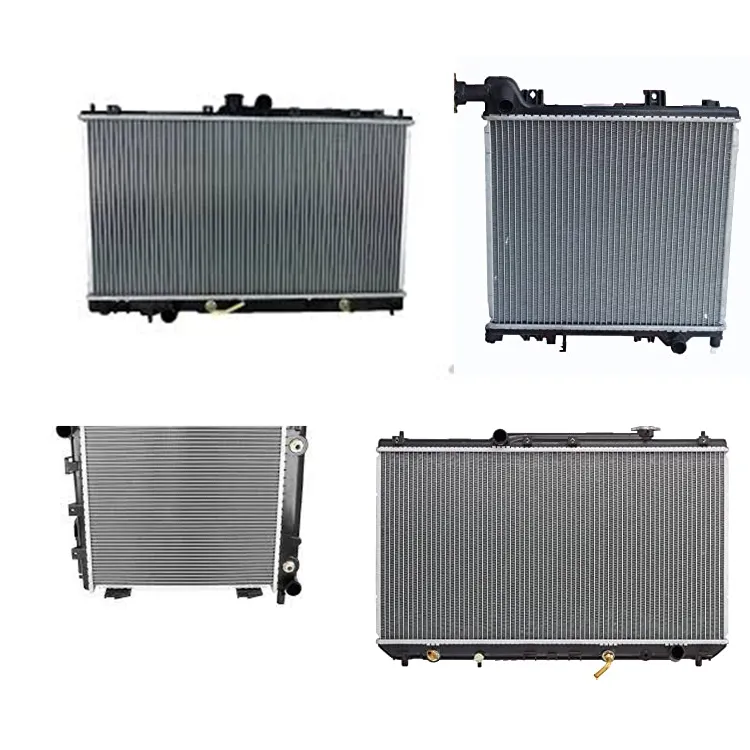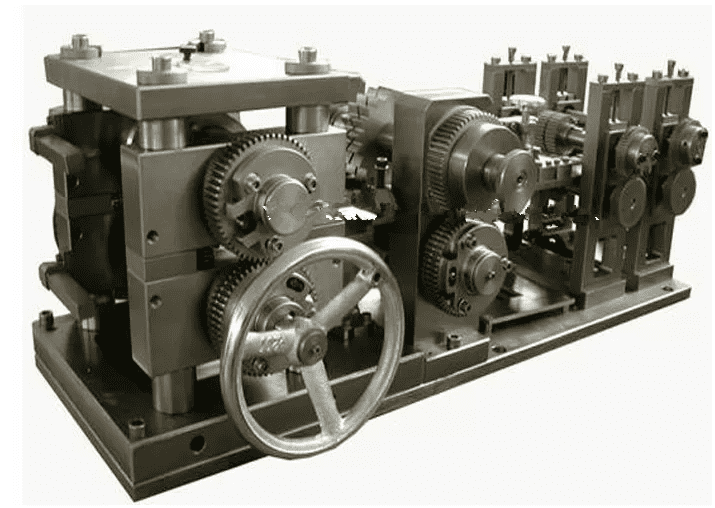Introduction to the Automotive Radiators Industry
The automotive radiators industry has been instrumental in the evolution and growth of the global automotive market. Radiators are crucial components of an automobile’s cooling system, vital in maintaining optimal engine performance. Technological advancements and ongoing research in this sector have paved the way for more efficient and effective automotive radiators, thus propelling the industry to new heights.
The automotive radiators industry is marked by innovation and constant development. Manufacturers continually strive to enhance their products’ efficiency and durability, ensuring they meet their consumer base’s diverse needs and expectations. Pursuing excellence has led to the introduction of more efficient and eco-friendly radiators, aligning with the global shift toward sustainable practices.
The global market for automotive radiators is growing steadily. This growth can be attributed to various factors, such as the rise in automotive production and sales, the increasing demand for fuel-efficient vehicles, and the need to reduce CO2 emissions. This article aims to shed light on the promising prospects of the automotive radiators industry, exploring its evolution, present trends, and future potential.
What is an automotive radiator, and what is its function?
An automotive radiator is a heat exchanger that cools a vehicle’s engine by dissipating the heat generated by the engine into the surrounding air. Thus, the radiator is essential to an automobile’s cooling system, ensuring the engine does not overheat and maintains optimal functioning.
The primary function of an automobile radiator is to keep the engine at its optimal operating temperature. This is achieved by circulating a mixture of water and coolant, known as antifreeze, through the engine. As the coolant absorbs the heat from the engine, it becomes hot. The hot coolant then moves through the radiator’s tubes, where the surrounding air cools it before re-circulating it into the engine.
In addition to cooling the engine, the radiator also helps maintain the temperature of the transmission fluid. This is achieved by incorporating a separate compartment within the radiator for the transmission fluid. The engine heats the liquid and cools it in the radiator before being sent back to the transmission.
The Evolution of Car Radiators
The evolution of car radiators is an exciting journey marked by continuous innovation and technological advancements. The first automotive radiators were simple in design, consisting of a water pump that circulated water through the engine to cool it. However, these early models were inefficient and often led to overheating problems.
With the advent of the internal combustion engine, the need for an effective cooling system became even more apparent. This led to the development of the honeycomb radiator in the early 20th century. Named for its unique design, this radiator consisted of small tubes arranged in a honeycomb pattern. This design significantly increased the surface area for heat dissipation, leading to improved cooling efficiency.
The evolution continued with the introduction of the crossflow radiator in the mid-20th century. This type of radiator featured tubes that ran horizontally rather than vertically, allowing for a more even distribution of coolant. The crossflow design also allowed for a lower and broader radiator, which was more aerodynamic and fit better in automobiles’ increasingly streamlined designs.
The Importance of Radiators in Automobiles
The importance of radiators in automobiles cannot be overstated. They are crucial components that ensure a vehicle’s engine’s smooth and efficient operation. Overheating is one of the most common causes of engine failure, and the radiator prevents this from happening.
A well-functioning radiator ensures that the engine operates at the optimal temperature. This enhances the vehicle’s performance and extends the engine’s lifespan. An overheated engine can lead to severe damage, including cracked cylinder heads, blown head gaskets, and warped pistons. By preventing overheating, the radiator helps to avoid these costly repairs.
The radiator protects the engine and contributes to the vehicle’s overall performance. An excellent engine operates more efficiently, leading to improved fuel economy. Furthermore, the radiator also helps maintain the temperature of the transmission fluid, which is vital for proper transmission functioning.
Present Trends in the Vehicle Radiator Market
The vehicle radiator market is currently experiencing several exciting trends. One of the most notable trends is the increasing demand for lightweight and compact radiators. As vehicles become more streamlined and space-efficient, manufacturers seek smaller, more efficient radiators. This has led to the development of compact radiators that deliver superior performance while taking up less space.
Another trend shaping the vehicle radiator market is the growing focus on sustainability. With the global push towards eco-friendly practices, manufacturers are developing more energy-efficient and environmentally friendly radiators. This includes using recycled materials to produce radiators and developing radiators requiring less energy.
The increasing popularity of electric vehicles (EVs) is also influencing the vehicle radiator market. While EVs do not require traditional radiators for engine cooling, they require radiators for cooling the battery and other electronic components. As a result, the demand for specialized radiators designed for EVs is rising.
Future Prospects of the Automotive Radiators Industry
The automotive radiators industry’s prospects are promising. The industry is expected to witness significant growth in the coming years, driven by various factors such as the rising demand for vehicles, increasing focus on fuel efficiency, and advancements in radiator technology.
The electric vehicle market is a critical growth area for the automotive radiators industry. As more consumers embrace electric vehicles, the demand for specialized radiators is expected to increase. This presents an excellent opportunity for radiator manufacturers to innovate and develop products that meet the unique needs of electric cars.
In addition to electric vehicles, the growing demand for high-performance cars is also expected to drive the growth of the automotive radiators industry. High-performance vehicles require more efficient cooling systems to handle the increased heat generated by their powerful engines. This is likely to boost the demand for advanced, high-performance radiators.
Technological Advancements in Car Radiators
Technological advancements have played a crucial role in the development of car radiators. Technology has driven their evolution, from the early days of simple water-cooled radiators to modern, highly efficient radiators.
One of the significant advancements in car radiators is using new materials. Traditional radiators were made from copper and brass, but modern radiators are made from aluminum, which is lighter, more efficient, and more durable. Using aluminum has dramatically improved the performance and longevity of car radiators.
Another significant advancement in car radiators is the introduction of multi-row radiators. These radiators feature multiple rows of tubes, which increases the surface area for heat dissipation. This leads to more efficient cooling, thereby enhancing the vehicle’s performance.
In addition to these advancements, there have been innovations in car radiators’ design and manufacturing processes. These include using computer-aided design (CAD) to create more efficient radiator designs and advanced manufacturing techniques to produce high-quality radiators.
The Role of Automotive Radiators in Vehicle Performance
The role of automotive radiators in vehicle performance is integral. The radiator is critical to a vehicle’s overall performance and efficiency. It ensures that the engine operates at the optimal temperature, which is crucial for the vehicle’s performance.
A well-functioning radiator helps to improve a vehicle’s fuel efficiency. When the engine operates at the optimal temperature, it burns fuel more efficiently, improving fuel economy. This saves money on fuel costs and reduces the vehicle’s emissions, contributing to environmental sustainability.
Apart from fuel efficiency, the radiator also plays a crucial role in maintaining the transmission’s performance. By helping to keep the temperature of the transmission fluid, the radiator ensures that the transmission operates smoothly and efficiently. This leads to improved vehicle performance and a better driving experience.
Leading Manufacturers of Automobile Radiators
Several leading manufacturers dominate the automobile radiators market. These manufacturers have a strong presence in the market and are known for their high-quality products and innovative technologies.
One of the top manufacturers of automobile radiators is Denso Corporation, a Japanese company known for its high-quality radiators and innovative cooling solutions. Denso’s radiators are highly efficient and durable, making them popular among vehicle manufacturers.
Another leading manufacturer is Valeo, a French company known for its advanced cooling systems. Valeo’s radiators feature innovative designs and state-of-the-art technology, making them highly efficient and reliable.
Other notable manufacturers of automobile radiators include Behr Hella Service GmbH, Calsonic Kansei Corporation, and Delphi Technologies. These companies offer a wide range of radiators for various types of vehicles, ensuring that they cater to the diverse needs of their consumers.
Conclusion: The Road Ahead for the Automotive Radiators Industry
The road ahead for the automotive radiators industry is filled with promise and potential. The industry is set to witness significant growth in the coming years, driven by the increasing demand for vehicles, advancements in radiator technology, and the growing focus on fuel efficiency and environmental sustainability.
As the automotive industry continues to evolve, the role of radiators in vehicle performance and efficiency will become even more critical. Manufacturers must continue innovating and developing new technologies to meet the market’s changing needs.
The future of the automotive radiators industry is indeed promising. With the right strategies and a commitment to innovation, manufacturers can seize the opportunities ahead and steer the industry toward new heights of success.












